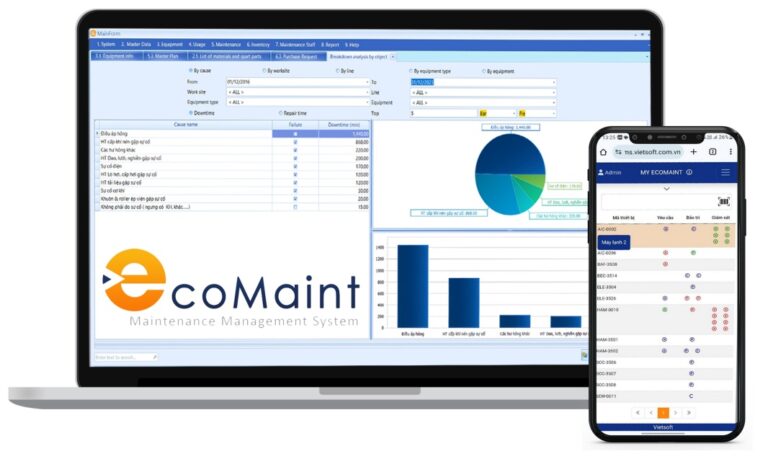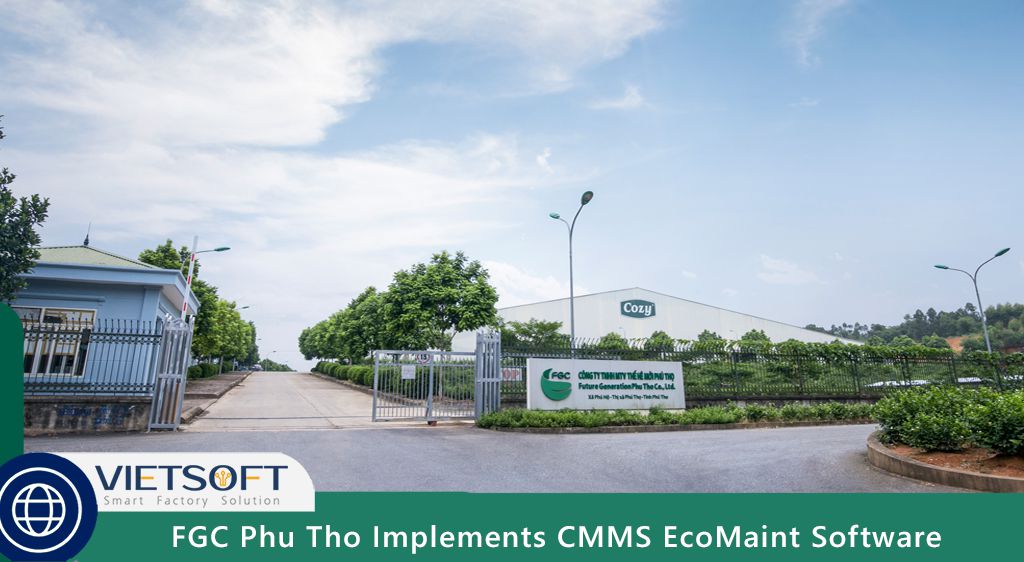
In today’s fast-paced industrial landscape, equipment reliability is critical to maintaining seamless operations. Traditional maintenance strategies, such as waiting for machines to fail or following rigid schedules, often lead to costly downtime and inefficiencies. The Role of IoT in Predictive Maintenance offers a transformative solution by leveraging smart technology to monitor equipment health in real time, predict potential failures, and optimize maintenance processes. This approach is reshaping industries like manufacturing, energy, healthcare, and logistics, ensuring higher productivity, reduced costs, and enhanced safety.
This comprehensive guide explores how IoT-driven predictive maintenance works, its benefits, applications across industries.
I. What is IoT Predictive Maintenance?
IoT predictive maintenance uses the Internet of Things (IoT) to monitor equipment health proactively. By embedding sensors in machines, businesses can collect real-time data on key performance metrics such as temperature, vibration, pressure, and energy usage. This data is transmitted to cloud-based platforms, where advanced analytics and machine learning algorithms analyze it to detect anomalies and predict potential failures before they occur.
Unlike traditional maintenance approaches, IoT predictive maintenance focuses on data-driven decisions. Instead of fixing machines after breakdowns (reactive maintenance) or servicing them on a fixed schedule (preventive maintenance), this method ensures maintenance is performed only when necessary, saving time and resources. The Role of IoT in Predictive Maintenance lies in its ability to provide actionable insights, enabling businesses to address issues before they disrupt operations.
II. How IoT Enhances Predictive Maintenance
The Role of IoT in Predictive Maintenance is powered by a combination of smart sensors, real-time data communication, and advanced analytics. Here’s how it works:
· Data Collection with IoT Sensors: Sensors embedded in machines continuously monitor parameters like temperature, vibration, and electrical current. These sensors act as the “eyes and ears” of the equipment, capturing data that indicates performance and health.
· Real-Time Data Transmission: The collected data is sent to cloud-based systems via secure networks. Technologies like 5G ensure fast and reliable data transfer, enabling real-time monitoring even for remote assets.
· Advanced Analytics and Machine Learning: AI and machine learning algorithms analyze the data to identify patterns and anomalies. For instance, a gradual increase in motor temperature might indicate impending bearing failure, prompting preemptive action.
· Automated Alerts and Workflows: When potential issues are detected, the system generates alerts and integrates with Computerized Maintenance Management Systems (CMMS) to create work orders. This ensures maintenance teams act swiftly and efficiently.
· Data Security Measures: Given the sensitive nature of equipment data, IoT systems employ encryption and compliance with data privacy regulations to protect against cyber threats.
By integrating these components, IoT predictive maintenance enables businesses to shift from reactive to proactive strategies, reducing costs and improving reliability.
III. Benefits of IoT in Predictive Maintenance
The Role of IoT in Predictive Maintenance delivers significant advantages for industries reliant on equipment performance. Here are the key benefits:
1. Reduced Downtime
Unplanned equipment failures can halt production, leading to significant losses. IoT systems predict issues before they cause breakdowns, allowing maintenance to be scheduled during planned downtime. For example, a study by McKinsey found that IoT-driven predictive maintenance can reduce downtime by up to 50%.
2. Cost Savings
By addressing issues early, businesses avoid expensive emergency repairs and unnecessary maintenance. IoT also optimizes spare parts inventory, ensuring parts are replaced only when needed, reducing waste.
3. Extended Equipment Lifespan
Continuous monitoring prevents machines from operating under stress, reducing wear and tear. For instance, detecting and correcting misalignment in a pump can extend its operational life by months or even years.
4. Enhanced Technician Efficiency
IoT provides technicians with real-time data, enabling them to focus on targeted repairs rather than time-consuming diagnostics. This streamlines workflows and reduces “wrench time.”
5. Improved Safety and Compliance
Faulty equipment can pose safety risks. IoT systems detect issues that could lead to hazardous conditions, ensuring compliance with industry regulations and safer workplaces.
6. Optimized Production
By minimizing disruptions, IoT predictive maintenance ensures consistent production output, boosting overall productivity and profitability.
These benefits make IoT predictive maintenance a game-changer for industries seeking to maximize efficiency and minimize costs.
IV. Components of IoT Predictive Maintenance Systems
The Role of IoT in Predictive Maintenance relies on several key components working together:
· IoT Sensors: These devices collect real-time data on machine health, monitoring metrics like vibration, temperature, and pressure.
· Data Communication Networks: Secure networks, such as 5G or Wi-Fi, transmit data to cloud-based platforms for analysis.
· Centralized Data Storage: Cloud systems store historical and real-time data, enabling trend analysis and long-term insights.
· Predictive Analytics: AI and machine learning algorithms analyze data to detect patterns and predict failures.
· CMMS Integration: Systems like CMMS EcoMaint integrate IoT data to automate work orders, schedule maintenance, and track asset performance.
These components form a cohesive system that transforms raw data into actionable maintenance strategies.
V. Challenges of Implementing IoT Predictive Maintenance
While the Role of IoT in Predictive Maintenance is transformative, implementation comes with challenges:
· High Initial Costs: Installing sensors, upgrading legacy systems, and deploying analytics platforms require significant investment. However, long-term savings often outweigh these costs.
· Data Security and Privacy: IoT systems handle sensitive data, making them targets for cyberattacks. Robust encryption and compliance with regulations like GDPR are essential.
· Integration with Legacy Systems: Older equipment may not be compatible with modern IoT sensors, requiring upgrades or custom solutions.
· Data Overload: Managing and analyzing large volumes of data requires expertise and advanced tools to extract meaningful insights.
· Change Management: Transitioning to IoT-driven maintenance requires training staff and aligning company culture with data-driven practices.
Addressing these challenges through careful planning and pilot programs can ensure successful adoption.
VI. Best Practices for Implementing IoT Predictive Maintenance
To maximize the Role of IoT in Predictive Maintenance, businesses should follow these best practices:
· Start Small with Pilot Programs: Test IoT predictive maintenance on a single asset to evaluate its effectiveness before scaling up.
· Invest in a Robust Technology Suite: Use platforms that centralize data collection and integrate with CMMS for streamlined workflows.
· Leverage Real-Time Analytics: Deploy algorithms that monitor data in real time to detect anomalies instantly.
· Establish Clear Workflows: Define processes for handling alerts, assigning tasks, and executing repairs.
· Prioritize Data Security: Implement encryption, access controls, and regular security audits to protect sensitive data.
· Train Staff: Equip maintenance teams with the skills to use IoT tools and interpret data effectively.
By following these practices, businesses can overcome challenges and unlock the full potential of IoT predictive maintenance.
VII. The Role of CMMS EcoMaint in IoT Predictive Maintenance
Integrating IoT with a robust CMMS like CMMS EcoMaint from Vietsoft takes predictive maintenance to new heights. This powerful software, designed specifically for the Vietnamese market, combines IoT data with advanced asset management capabilities to deliver actionable insights. Key features include:
- Real-Time Monitoring: EcoMaint integrates with IoT sensors to track equipment health, providing instant alerts for anomalies.
- Automated Work Orders: The system generates maintenance tasks based on IoT data, ensuring timely interventions.
- Comprehensive Asset History: EcoMaint builds a detailed record of equipment performance, helping identify recurring issues and optimize maintenance schedules.
- User-Friendly Interface: Designed for technicians and managers, EcoMaint simplifies data interpretation and task management.
By leveraging CMMS EcoMaint, businesses can reduce downtime, lower costs, and enhance equipment reliability. Curious about transforming your maintenance strategy? Explore the CMMS EcoMaint solution here.
Contact us for consultation via hotline: 0986778578 or email: sales@vietsoft.com.vn.
VIII. The Future of IoT in Predictive Maintenance
The Role of IoT in Predictive Maintenance is set to grow as technologies like AI, machine learning, and 5G advance. Future trends include:
- Enhanced AI Capabilities: More sophisticated algorithms will improve failure prediction accuracy.
- Edge Computing: Processing data closer to the source will reduce latency and enhance real-time decision-making.
- Integration with Digital Twins: Virtual models of equipment will enable simulations to predict performance under various conditions.
- Sustainability Focus: IoT will optimize energy usage, reducing environmental impact and operational costs.
These advancements will make IoT predictive maintenance even more accessible and impactful for industries worldwide.
IX. FAQs About IoT Predictive Maintenance
1. What is the difference between predictive and preventive maintenance?
Preventive maintenance follows a fixed schedule, such as servicing equipment every six months, regardless of its condition. Predictive maintenance uses real-time data to schedule maintenance only when needed, reducing unnecessary tasks and costs.
2. How does IoT improve predictive maintenance?
IoT sensors collect continuous data on equipment performance, which is analyzed to predict failures. This allows for timely interventions, minimizing downtime and optimizing resources.
3. What types of data are monitored in IoT predictive maintenance?
Common metrics include vibration, temperature, pressure, electrical current, and energy consumption, depending on the equipment and industry.
4. Can small businesses benefit from IoT predictive maintenance?
Yes, small businesses can start with pilot programs and scalable solutions like CMMS EcoMaint, which offer cost-effective ways to implement IoT-driven maintenance.
X. Conclusion
The Role of IoT in Predictive Maintenance is revolutionizing how industries manage equipment, shifting from reactive fixes to proactive strategies. By leveraging IoT sensors, real-time data, and advanced analytics, businesses can predict failures, reduce downtime, and optimize costs. From manufacturing to healthcare, IoT is transforming maintenance across sectors, ensuring reliability, safety, and efficiency.




